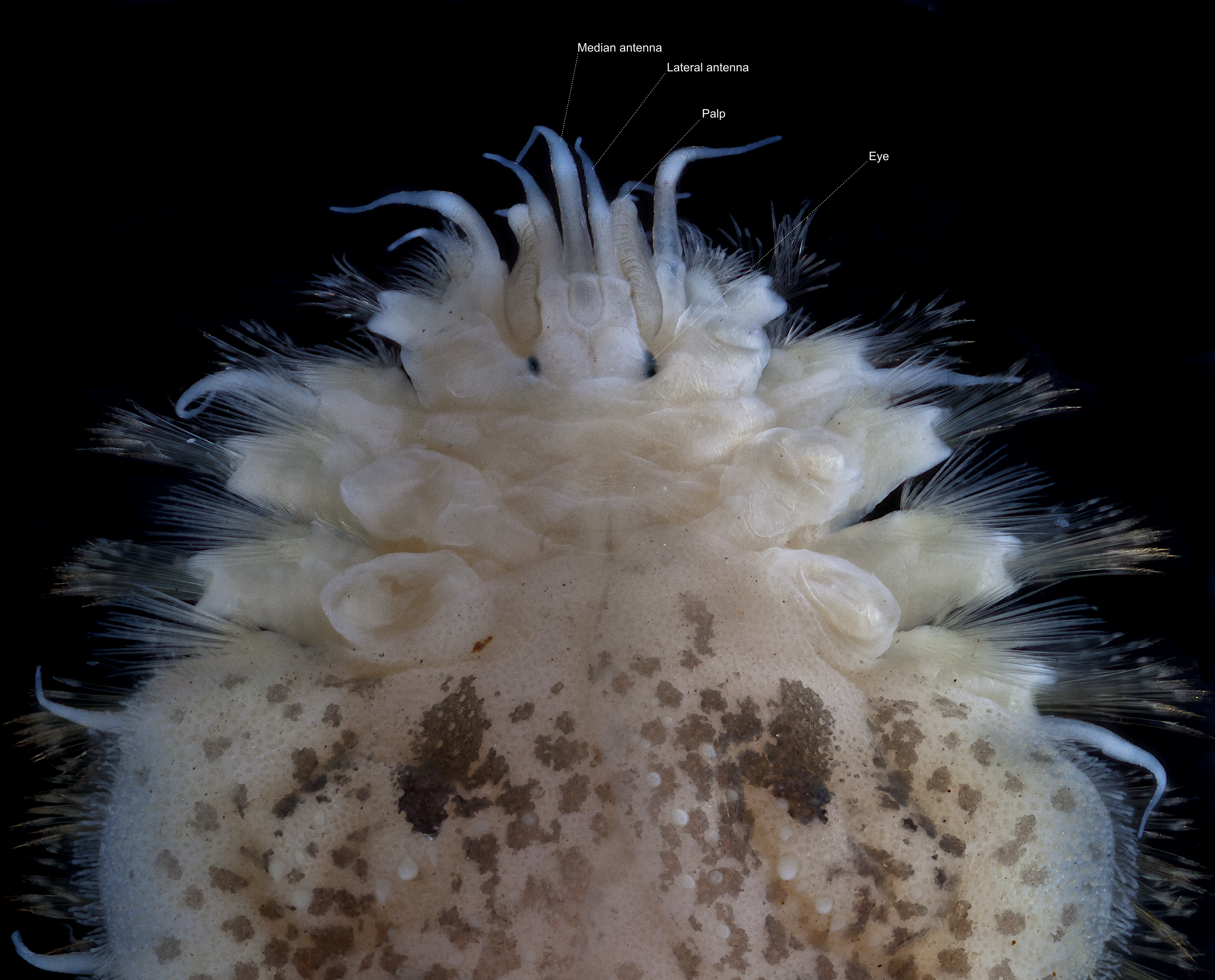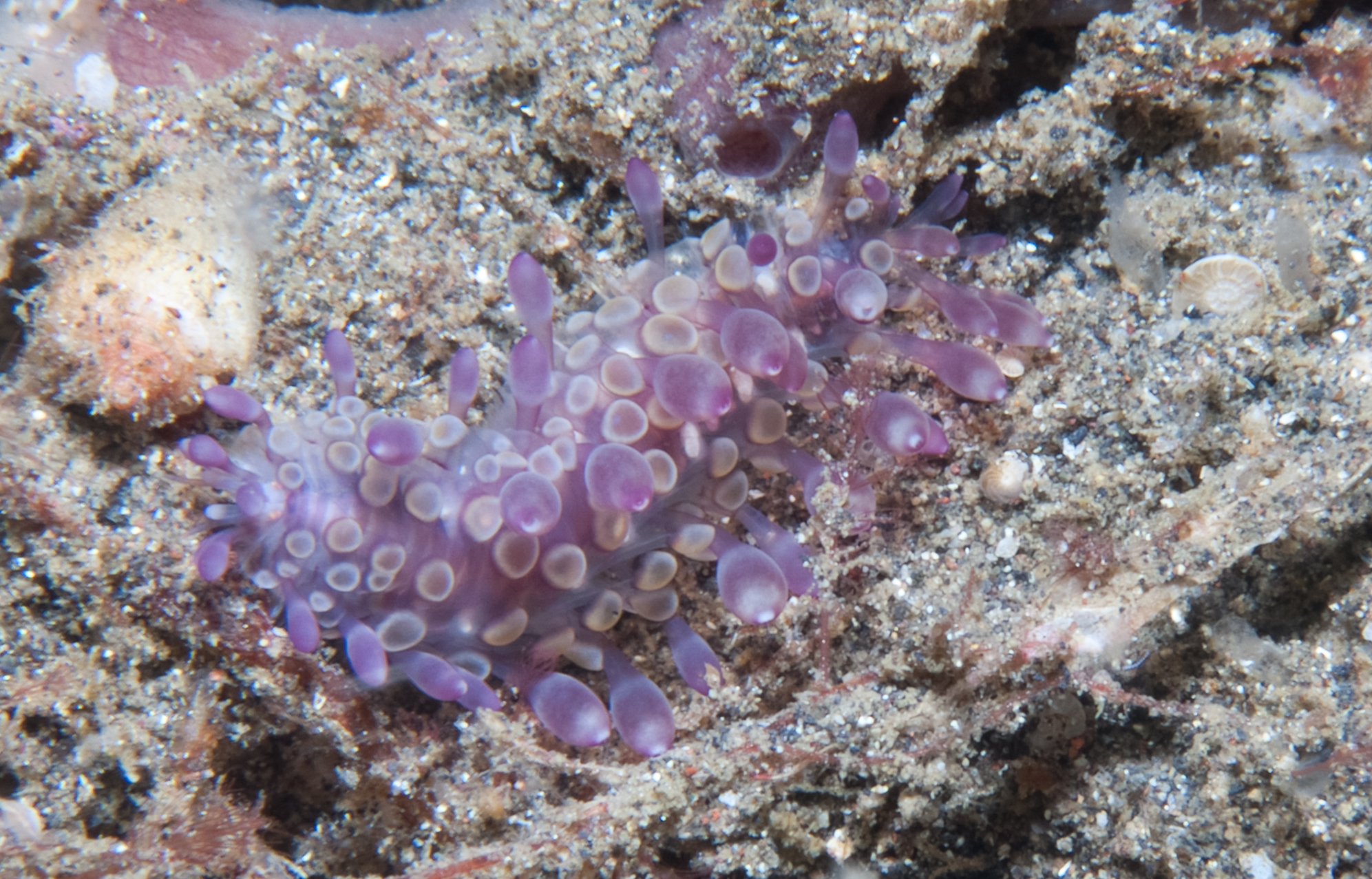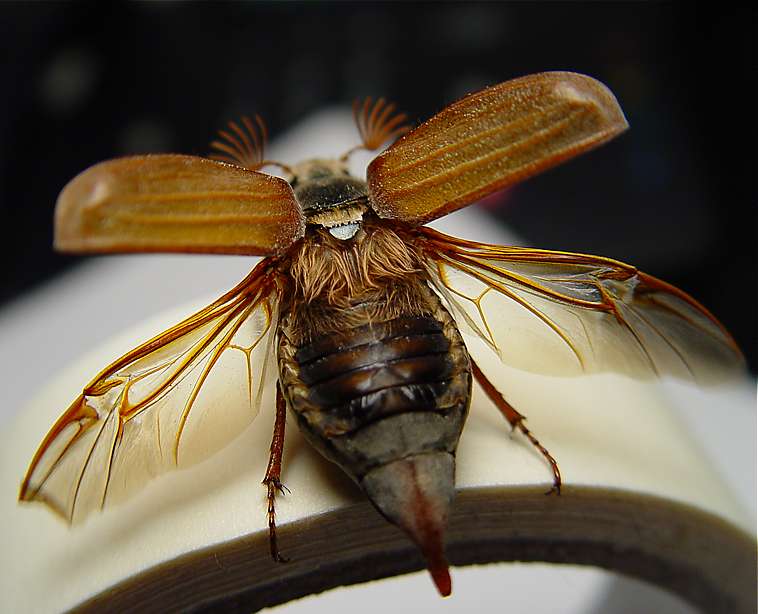|
Augenerilepidonotus
''Augenerilepidonotus dictyolepis'' is a species of marine annelids in the family Polynoidae (scale worms) and the sole member of the genus ''Augenerilepidonotus''. It is known from Australia, usually from depths of about 40 metres or less. Description Body dorsoventrally flattened, short, with 26 segments and 12 pairs of elytra on segments 2, 4, 5, 7, 9, 11, 13, 15, 17, 19, 21, and 2. Prostomium with three antennae; lateral antennae continuous with prostomium, laterally to median antenna. elytra covered with chitinous irregular polygonal areas. Notochaetae slender and densely serrated. Neurochaetae much more stout, with few rows of spines distally and exclusively unidentate tips (see Pettibone, 1995 for detailed diagnosis) . ''Augenerilepidonotus dictyolepis'' is very similar to species of Lepidonotus ''Lepidonotus'' is a genus of marine annelids in the family Polynoidae (scale worms). The genus occurs globally and includes 80 species, usually found in shal ... [...More Info...] [...Related Items...] OR: [Wikipedia] [Google] [Baidu] |
Elytron (Annelida)
In annelids, elytra (; from Greek ἔλυτρον "sheath, cover"; singular: elytron ) are shield-like scales that are attached dorsally, one pair on each of a number of alternating segments and entirely or partly cover the dorsum. Elytra are modified dorsal cirri, and their number, size, location, and ornamentation are important taxonomic characters. The basal part of the elytra is known as the elytrophore; if (as is often the case) elytra are lost their presence is indicated by the elytrophore which is still present and visible. Annelids possessing elytra are also known as "scale worms". Possession of elytra is characteristic of the annelid suborder Aphroditiformia. Gallery File:Eunoe leiotentaculata lower res.jpg, A ''Eunoe leiotentaculata'' specimen showing its 15 pairs of elytra. File:Euphione sp. dorsal.jpg, ''Euphione ''Euphione'' is a genus of polychaetes belonging to the family Polynoidae. The species of this genus are found in Australia, Malesia Malesia is a ... [...More Info...] [...Related Items...] OR: [Wikipedia] [Google] [Baidu] |
Prostomium
The prostomium (From Ancient Greek, meaning "before the mouth"; plural: prostomia; sometimes also called the "acron") is the cephalized first body segment in an annelid worm's body at the anterior end. It is in front of (but does not include) the mouth, being usually a small shelf- or lip-like extension over the dorsal side of the mouth. The prostomium together with the peristomium, which includes the mouth and pharynx, make up the annelid head. Description The prostomium is part of the head and holds at least part of the brain and often bears sensory structures such as the eyes, antennae and palps. It may function like a kind of overlip when the animal is feeding. The prostomium bears many important taxonomic characters and its shape and composition are important for annelid systematics. In addition to the eyes, antennae and palps, the prostomium can possess appendages such as tentacles or cirri. Moreover, some polychaete Polychaeta () is a paraphyletic class of gener ... [...More Info...] [...Related Items...] OR: [Wikipedia] [Google] [Baidu] |
Polynoidae
Polynoidae is a family of marine Polychaete worms known as "scale worms" due to the scale-like elytra on the dorsal surface. Almost 900 species are currently recognised belonging to 9 subfamilies and 167 genera. They are active hunters, but generally dwell in protected environments such as under stones. The group is widely distributed from shallow intertidal waters to hadal trenches. They are the most diverse group of polychaetes in terms of genus number and second most diverse in terms of species number which is almost 8% of all segmented worm species. Description Most Polynoidae species are short and flattened, but can reach as much as 20 cm in length and 10 cm width in '' Eulagisca gigantea'' and '' Eulagisca uschakovi''. Individuals are usually covered almost entirely by elytra, which can be shed and regenerated in many species. The elytra of some species are faintly bioluminescent, and leave glowing traces around the mouthparts of their predators, making those pre ... [...More Info...] [...Related Items...] OR: [Wikipedia] [Google] [Baidu] |
Museums Victoria
Museums Victoria is an organisation which operates three major state-owned museums in Melbourne, Victoria: the Melbourne Museum, the Immigration Museum and Scienceworks Museum. It also manages the Royal Exhibition Building and a storage facility in Melbourne's City of Moreland. History The museum traces its history back to the establishment of the "Museum of Natural and Economic Geology" by the Government of Victoria, William Blandowski and others in 1854. The Library, Museums and National Gallery Act 1869 incorporated the Museums with the Public Library and the National Gallery of Victoria; but this administrative connection was severed in 1944 when the Public Library, National Gallery and Museums Act came into force, and they became four separate institutions once again. Museums Victoria was founded in its current form under the Australian Museums Act (1983). Currently, Museums Victoria's State Collections holds over 17 million items, including objects relating to I ... [...More Info...] [...Related Items...] OR: [Wikipedia] [Google] [Baidu] |
Marian H
Marian may refer to: People * Mari people, a Finno-Ugric ethnic group in Russia * Marian (given name), a list of people with the given name * Marian (surname), a list of people so named Places *Marian, Iran (other) * Marian, Queensland, a town in Australia * Marian, a village in toe commune of Hîrtop, Transnistria, Moldova * Lake Marian, New Zealand * Marian Cove, King George Island, South Shetland Islands * Mt Marian, Tasmania, a mountain in Australia * Marian, Albania, a village near Lekas, Korçë County Christianity * Marian, an adjective for things relating to the Blessed Virgin Mary (Roman Catholic), specifically Marian devotions * Congregation of Marian Fathers, also known as Marians of the Immaculate Conception, a Roman Catholic male clerical congregation Schools * Marian Academy, a Roman Catholic private school in Georgetown, Guyana * Marian College (other) * Marian High School (other) * Marian University (Indiana) * Marian University ( ... [...More Info...] [...Related Items...] OR: [Wikipedia] [Google] [Baidu] |
Annelid
The annelids (Annelida , from Latin ', "little ring"), also known as the segmented worms, are a large phylum, with over 22,000 extant species including ragworms, earthworms, and leeches. The species exist in and have adapted to various ecologies – some in marine environments as distinct as tidal zones and hydrothermal vents, others in fresh water, and yet others in moist terrestrial environments. The Annelids are bilaterally symmetrical, triploblastic, coelomate, invertebrate organisms. They also have parapodia for locomotion. Most textbooks still use the traditional division into polychaetes (almost all marine), oligochaetes (which include earthworms) and leech-like species. Cladistic research since 1997 has radically changed this scheme, viewing leeches as a sub-group of oligochaetes and oligochaetes as a sub-group of polychaetes. In addition, the Pogonophora, Echiura and Sipuncula, previously regarded as separate phyla, are now regarded as sub-groups of ... [...More Info...] [...Related Items...] OR: [Wikipedia] [Google] [Baidu] |
Antenna (biology)
Antennae ( antenna), sometimes referred to as "feelers", are paired appendages used for Sensory system, sensing in arthropods. Antennae are connected to the first one or two Segmentation (biology), segments of the arthropod head. They vary widely in form but are always made of one or more jointed segments. While they are typically sensory organs, the exact nature of what they sense and how they sense it is not the same in all groups. Functions may variously include sensing tactition, touch, air motion, heat, vibration (sound), and especially insect olfaction, smell or gustation, taste. Antennae are sometimes modified for other purposes, such as mating, brooding, swimming, and even anchoring the arthropod to a substrate (biology), substrate. Larval arthropods have antennae that differ from those of the adult. Many crustaceans, for example, have free-swimming larvae that use their antennae for swimming. Antennae can also locate other group members if the insect lives in a group, lik ... [...More Info...] [...Related Items...] OR: [Wikipedia] [Google] [Baidu] |
Chaeta
A chaeta or cheta (from Greek χαίτη “crest, mane, flowing hair"; plural: chaetae) is a chitinous bristle or seta found in annelid worms, (although the term is also frequently used to describe similar structures in other invertebrates such as arthropods). Polychaete annelids, ('polychaeta' literally meaning "many bristles") are named for their chaetae. In Polychaeta, chaetae are found as bundles on the parapodia, paired appendages on the side of the body. The chaetae are epidermal extracellular structures, and clearly visible in most polychaetes. They are probably the best studied structures in these animals. Use in taxonomy and identification The ultrastructure of chaetae is fundamentally similar for all taxa but there is vast diversity in chaetal morphology. Moreover, chaetae bear precise characters for determination of species and taxonomic assessment. The shape, absolute and relative size, number, position, ornamentation and type are important taxonomic characters ... [...More Info...] [...Related Items...] OR: [Wikipedia] [Google] [Baidu] |
Unidentate
In coordination chemistry, denticity () refers to the number of donor groups in a given ligand that bind to the central metal atom in a coordination complex. In many cases, only one atom in the ligand binds to the metal, so the denticity equals one, and the ligand is said to be monodentate (sometimes called unidentate). Ligands with more than one bonded atom are called polydentate or multidentate. The denticity of a ligand is described with the Greek letter κ ('kappa'). For example, κ6- EDTA describes an EDTA ligand that coordinates through 6 non-contiguous atoms. Denticity is different from hapticity because hapticity refers exclusively to ligands where the coordinating atoms are contiguous. In these cases the η ('eta') notation is used. Bridging ligands use the μ ('mu') notation. Classes Polydentate ligands are chelating agents and classified by their denticity. Some atoms cannot form the maximum possible number of bonds a ligand could make. In that case one or m ... [...More Info...] [...Related Items...] OR: [Wikipedia] [Google] [Baidu] |
Lepidonotus
''Lepidonotus'' is a genus of marine annelids in the family Polynoidae (scale worms). The genus occurs globally and includes 80 species, usually found in shallow waters down to about 80 metres. Description Body dorsoventrally flattened, short, with 26 segments and 12 pairs of elytra on segments 2, 4, 5, 7, 9, 11, 13, 15, 17, 19, 21, and 23. Prostomium with three antennae; lateral antennae continuous with prostomium, laterally to median antenna. Parapodia with elongate acicular lobes with both acicula penetrating epidermis. Notochaetae slender and densely serrated. Neurochaetae much more stout, with rows of spines distally and unidentate and/or bidentate tips (see Barnich & Fiege, 2003 for detailed diagnosis) . Species The following species of ''Lepidonotus'' were accepted as valid as of June 2020: *''Lepidonotus adspersus'' (Grube, 1878) *''Lepidonotus aeololepis'' Haswell, 1883 *''Lepidonotus albopustulatus'' Horst, 1915 *''Lepidonotus ambigua'' Knox, 1960 *' ... [...More Info...] [...Related Items...] OR: [Wikipedia] [Google] [Baidu] |
Elytra
An elytron (; ; , ) is a modified, hardened forewing of beetles (Coleoptera), though a few of the true bugs ( Hemiptera) such as the family Schizopteridae are extremely similar; in true bugs, the forewings are called hemelytra (sometimes alternatively spelled as "hemielytra"), and in most species only the basal half is thickened while the apex is membranous, but when they are entirely thickened the condition is referred to as "coleopteroid". An elytron is sometimes also referred to as a shard. Description The elytra primarily serve as protective wing-cases for the hindwings underneath, which are used for flying. To fly, a beetle typically opens the elytra and then extends the hindwings, flying while still holding the elytra open, though many beetles in the families Scarabaeidae and Buprestidae can fly with the elytra closed (e.g., most Cetoniinae; ). In a number of groups, the elytra are reduced to various degrees, (e.g., the beetle families Staphylinidae and Ripiphoridae), o ... [...More Info...] [...Related Items...] OR: [Wikipedia] [Google] [Baidu] |
Cirrus (biology)
In biology, a cirrus , plural ''cirri'', , (from the Latin ''cirrus'' meaning a ''curl-like tuft or fringe'') is a long, thin structure in an animal similar to a tentacle but generally lacking the tentacle's strength, flexibility, thickness, and sensitivity. In the sheep liver fluke, for example, the ''cirrus'' is the worm's muscular penis and when not in use is retained within a ''cirrus sac'' or ''pouch'' near the animal's head. The same structure exists in the various ''Taenia'' species of tapeworm. In the clam worms, however, the cirrus is the tentacular process or growth on each of the feet (''parpodia''), either the ''dorsal cirrus'' or the ''ventral cirrus'', and has nothing to do with reproduction. Among the bristleworms, a cirrus is a tentacular growth near the head or notopodium containing sense organs and may be either dorsal, ventral, or lamellar. Among the ribbonworms, the ''caudal cirrus'' is a small thread-like growth at the posterior end of the worm. ... [...More Info...] [...Related Items...] OR: [Wikipedia] [Google] [Baidu] |







.jpg)